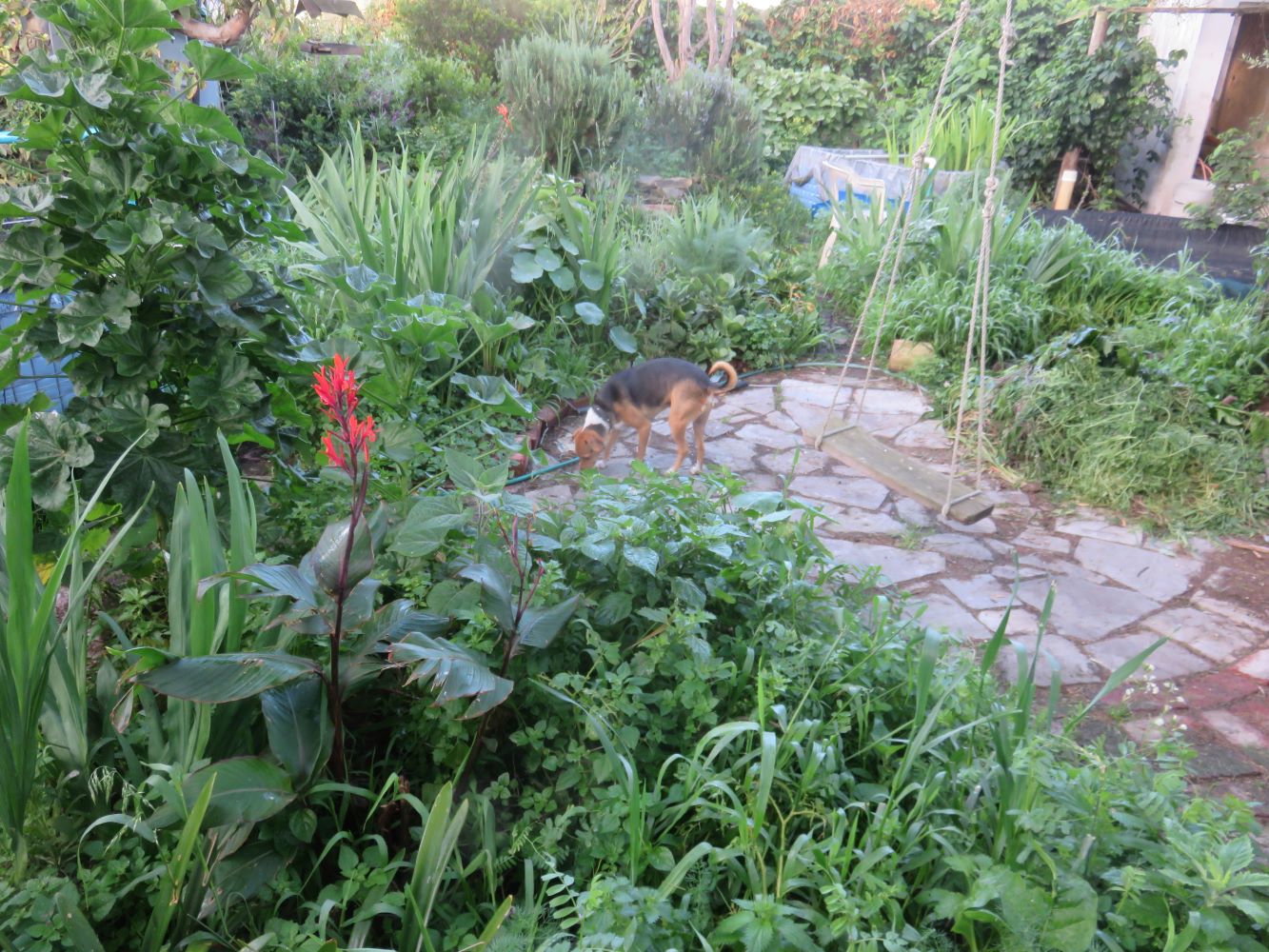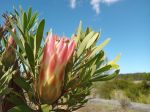Dear Reader, in this age of AI created content, please support with your goodwill someone who works harder to provide the human-made. Sign up in the righthand column or bottom of this page. You will receive my hand illustrated monthly newsletter RESTORE NATURE and access to the biodiversity garden design course as I write...and nothing else, I respect your time.
Some indigenous dune plants in Khayelitsha
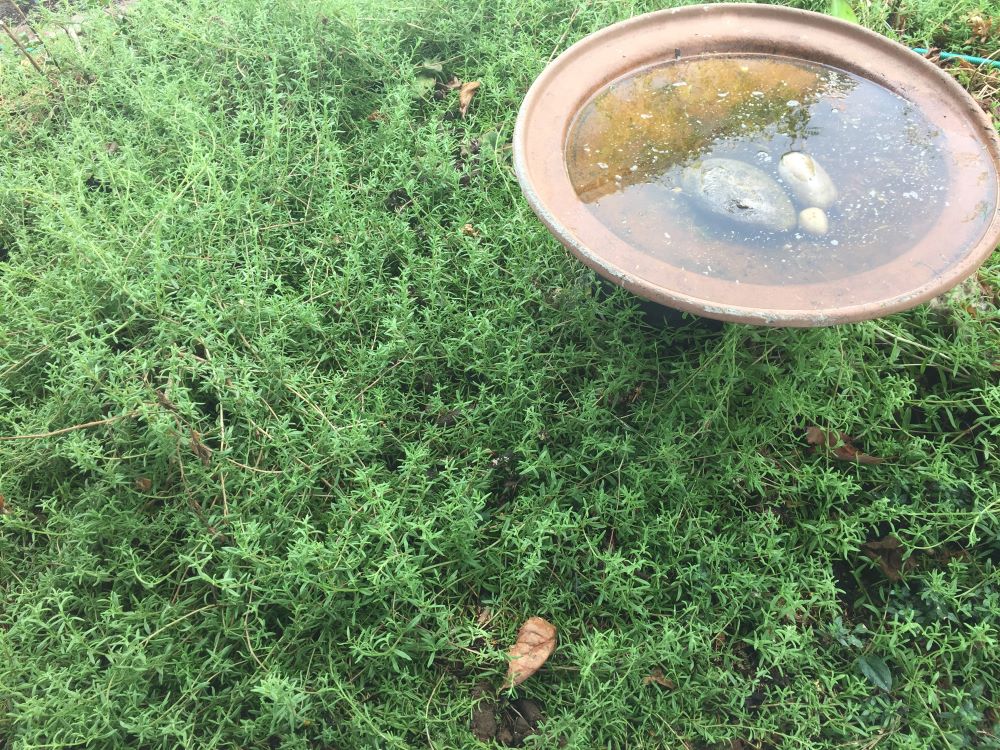 Trachyandra
Trachyandra
 Carpobrotus Carpobrotus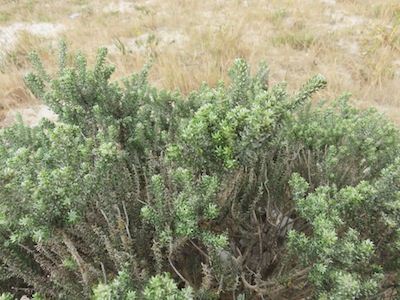 Metalasia Metalasia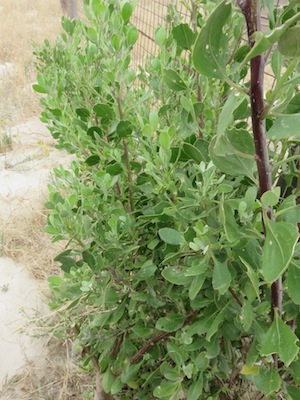 Chrysanthemoides Chrysanthemoides |
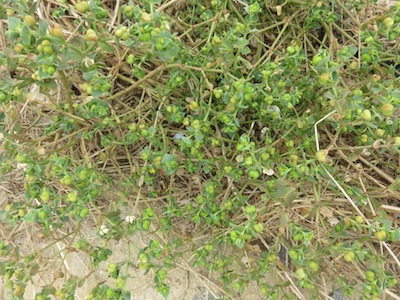 Euphorbia sp ? Euphorbia sp ?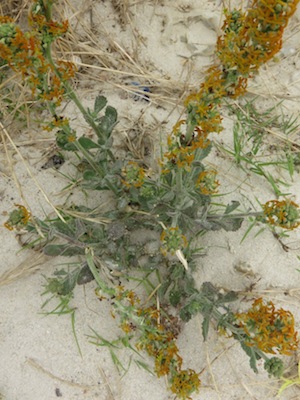 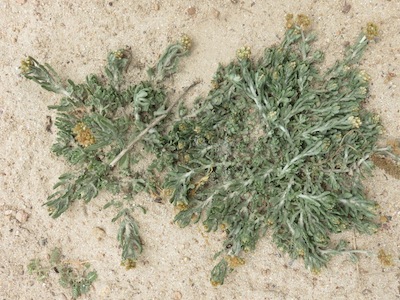 Helichrysum Helichrysum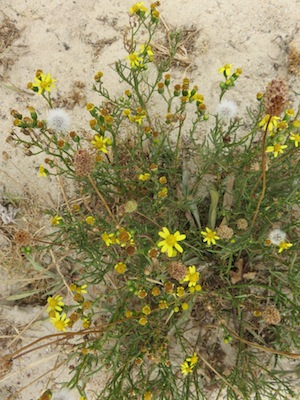 Senecio sp ? Senecio sp ? |
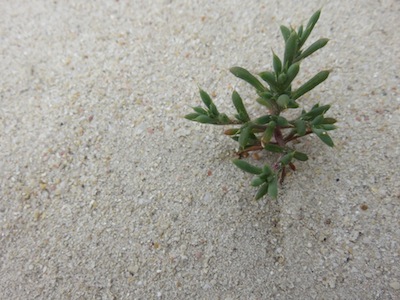 unidentified veygie
unidentified veygieI took a walk around Boitumelo's community farm in Khayelitsha and found a number of native dune stabilizing plants, many of them actually edibles, as I learned last year from Loubie Rusch, who is farming indigenous vegetables in
Khayelitsha on another project. The small plants show that seed is in the soil and germinating on its own, and if left undisturbed the bushes would grow and more indigenous seed would germinate. Exciting for permaculturists who hang on the side of conservation were two native legume varieties.
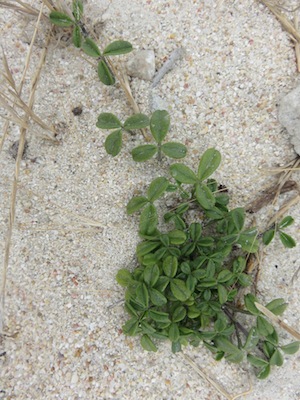 trailing trailing |
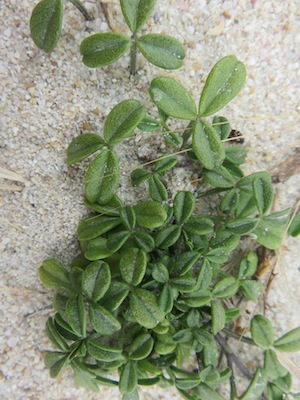 legume legume |
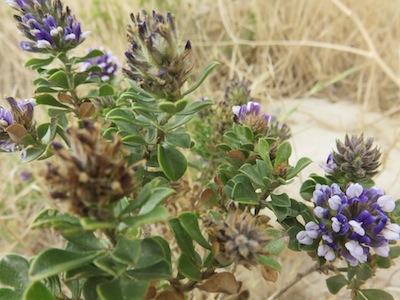 bush legume
bush legumeThe one had a compact bush shape, grayish leaves and very pretty blue flowers that look a little like clover and the other had long trailing stems. The trailing stemmed variety seems to be a very important dune stabilizer as well as a nitirifier, I've seen a very similar plant with thin trailing stems 3 meters long coming off the mother clump at Haakgat on the west coast.
Dune stabilizing plants will look after themselves and the site in areas where sand is left undisturbed.
Once more plant cover is established in this harsh, sandy context, this should shift the whole ecosystem of the
site and change its hydrology. Dune plants are water harvesters, like the nets people hang to catch sea mist, they do it with their tiny leaves on multi-branched structures. These dune plants are a huge asset to the site, especially as it is so large and areas may need to be ignored for a while or put in permaculture design zone 5.
------
home page with links to info on natural gardening
------
Restore Nature Newsletter
I've been writing for four years now and I would love to hear from you
Please let me know if you have any questions, comments or stories to share on gardening, permaculture, regenerative agriculture, food forests, natural gardening, do nothing gardening, observations about pests and diseases, foraging, dealing with and using weeds constructively, composting and going offgrid.
SEARCH
Order the Kindle E-book for the SPECIAL PRICE of only
Prices valid till 30.09.2023
Recent Articles
-
garden for life is a blog about saving the earth one garden at a time
Apr 18, 25 01:18 PM
The garden for life blog has short articles on gardening for biodiversity with native plants and regenerating soil for climate amelioration and nutritious food -
Cape Flats Sand Fynbos, Cape Town's most endangered native vegetation!
Apr 18, 25 10:36 AM
Cape Flats Sand Fynbos, a vegetation type found in the super diverse Cape Fynbos region is threatened by Cape Town's urban development and invasive alien plants -
Geography Research Task
Jan 31, 25 11:37 PM
To whom it may concern My name is Tanyaradzwa Madziwa and I am a matric student at Springfield Convent School. As part of our geography syllabus for this
"How to start a profitable worm business on a shoestring budget
Order a printed copy from "Amazon" at the SPECIAL PRICE of only
or a digital version from the "Kindle" store at the SPECIAL PRICE of only
Prices valid till 30.09.2023

